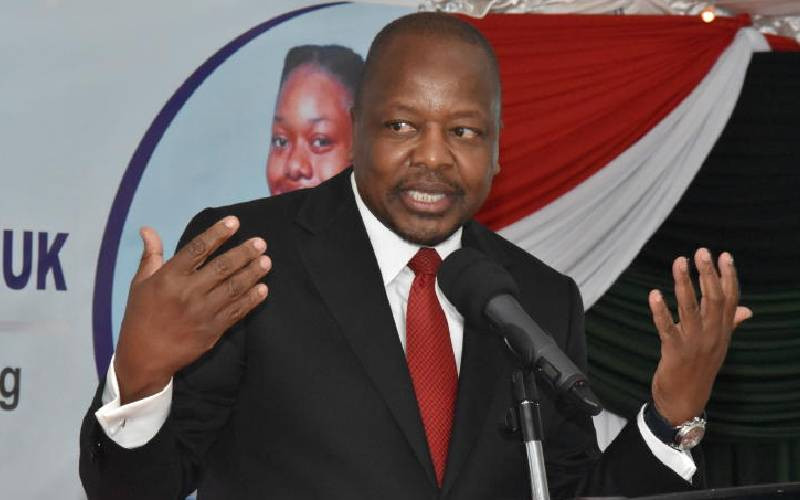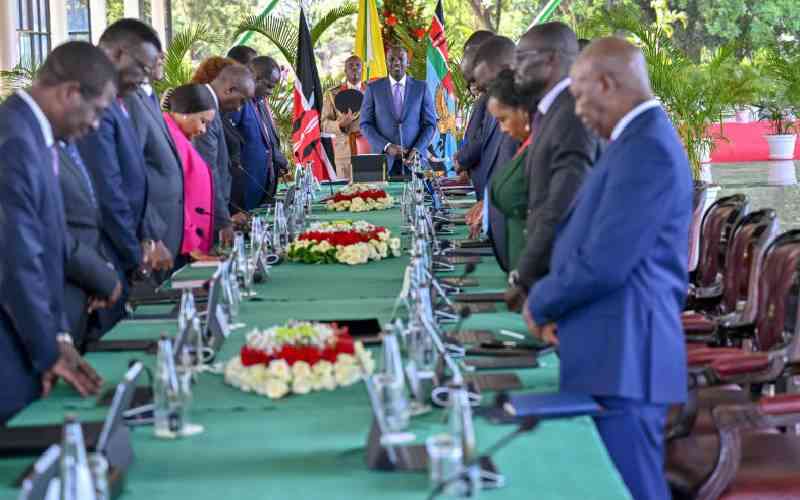By Ali Abdi
Most visitors to the Kenya-Ethiopian border town of Moyale get the same response while looking for accommodation.
"If you are looking for a good place, spend the night across the border," often comes the reply.
From police officers, provincial administrators and NGO officials to wananchi, they prefer the Ethiopian side, that goes by the same name, Moyale or simply ‘Across’.
So what does the Kenyan side lack and what pulls most visitors to the Ethiopian side?
After sunset, the Kenyan side gets dark and a gloomy atmosphere pervades the town.
Dry water taps, poor roads, lack of a sewerage system and high prices of goods connive to lend the Kenyan side an unwelcome image.
"There are few lodges on the Kenyan side and most are in poor shape. Few visitors would fancy using a pit latrine or taking a bath from a bucket when you can live lavishly across the road," a senior police officer says.
The road leading to Moyale is rough and dusty, after enduring 500km from Isiolo, where the tarmac ends.
Smooth ride
In contrast, Moyale town in Ethiopia has a well-maintained tarmac road linking it with the capital, Addis Ababa about 700km away.
Street lights on the Ethiopian side light up businesses at night and there is abundant piped water.
The Ethiopian Government, keen on using the Port of Mombasa, tarmacked a 770km road between Addis-Ababa and its border town of Moyale way back in 1977.
Addis Ababa entered into an agreement with Kenya to tarmac the 526-km stretch between Isiolo and Moyale.
Kenya’s work on the road has just begun — more than 30 years later.
Stay informed. Subscribe to our newsletter
A Chinese firm is building the first section (136km) from Isiolo to Merille River Bridge.
Ethiopia connected its side with piped water from the Ethiopian Highlands, hundreds of kilometres away.
"Due to the bad road linking here and Nairobi, Kenyan goods are very expensive while things are cheaper on the Ethiopian side," says Kenyan trader, Abdinoor Guyo.
Some NGOs and Government departments have put up guesthouses for their teams and visitors.
Most residents buy water from the Ethiopian side. Women and children ferrying water on their backs and on donkey carts are a common sight.
During the current drought, most residents rely on NGOs and the Government for water.
But it is not all gloom on the Kenyan side. If you overlook the bad roads, insecurity and chronic water shortages, the town’s natural beauty and hospitable residents will warm the heart.
Ethiopian delicacy
On either side of the twin towns a visitor will relish a traditional Ethiopian meal of zigni, made from wheat flour and served with spicy goat meat, beef or chicken.
Moyale is located on a picturesque hill that one climbs while approaching it.
It seems the British colonialists considered the elevated topography when they set up Moyale town in the early 1900s.
They set up a garrison in Moyale to monitor Italian troops who initially occupied Ethiopia.
The Italians also built their own to monitor the British before the outbreak of the First World War. The two sides fought each other during the war. As a result, there are many World War I monuments in Moyale, Kenya.
Moyale falls on the leeward side of the Ethiopian Highlands and is predominantly occupied by the Borana.
The town is lifeless at night and for those who like a beer or two there are only two bars.
The most famous is curiously named ‘AK-47’ and its walls feature bullet marks.
"Some years back, there were a gun battle between Ethiopian troops pursuing militia. The rifles used were AK-47. The holes on the wall were caused by bullets," a patron offers.
The Prisons and Customs departments have a bar, frequented by senior Government officers.
Most Kenyans, however, cross to Ethiopia for business. Ethiopians operate bazaars like those in Nairobi’s Eastleigh.
Imported items ranging from textiles, shoes and gold products are sold mostly to Kenyans. Goods worth millions of shillings exchange hands weekly.
Another attraction for Kenyans across the border is the Ethiopia’s beautiful girls with their light complexion and long, curly hair.
The girls called ‘anchis’ are often found in leading restaurants where they work as waitresses and guesthouse attendants.
However, it is not unusual for armed military men knocking at the door asking for identification documents on the Ethiopian side.
Those without IDs end up in military camps far in the interior to ‘explain’ their presence. Most Borana are mistaken as spies for the Oromo Liberation Front (OLF), which is in armed conflict with the Ethiopian Government.
Also, the Ethiopians often ask NGO workers to remove radio from their vehicles before entering the country. Taking photographs is not allowed and neither is talking politics taken lightly. This is one of the most policed border points.
Ethiopians have limited telecommunication facilities, archaic landline telephones and no Internet services.
Recently, they got connected to MTN network but many prefer Kenya’s Safaricom and Zain networks.
Kenyan Moyale also attracts Ethiopians into its public primary schools and the district hospital.
Education system
"The Ethiopians use Amharic in their school curriculum and highly value the Kenyan system, which uses English," says a Kenyan resident.
The Ethiopians also rely on the Kenyan hospital, which has better services.
 The Standard Group Plc is a
multi-media organization with investments in media platforms spanning newspaper
print operations, television, radio broadcasting, digital and online services. The
Standard Group is recognized as a leading multi-media house in Kenya with a key
influence in matters of national and international interest.
The Standard Group Plc is a
multi-media organization with investments in media platforms spanning newspaper
print operations, television, radio broadcasting, digital and online services. The
Standard Group is recognized as a leading multi-media house in Kenya with a key
influence in matters of national and international interest.
 The Standard Group Plc is a
multi-media organization with investments in media platforms spanning newspaper
print operations, television, radio broadcasting, digital and online services. The
Standard Group is recognized as a leading multi-media house in Kenya with a key
influence in matters of national and international interest.
The Standard Group Plc is a
multi-media organization with investments in media platforms spanning newspaper
print operations, television, radio broadcasting, digital and online services. The
Standard Group is recognized as a leading multi-media house in Kenya with a key
influence in matters of national and international interest.








